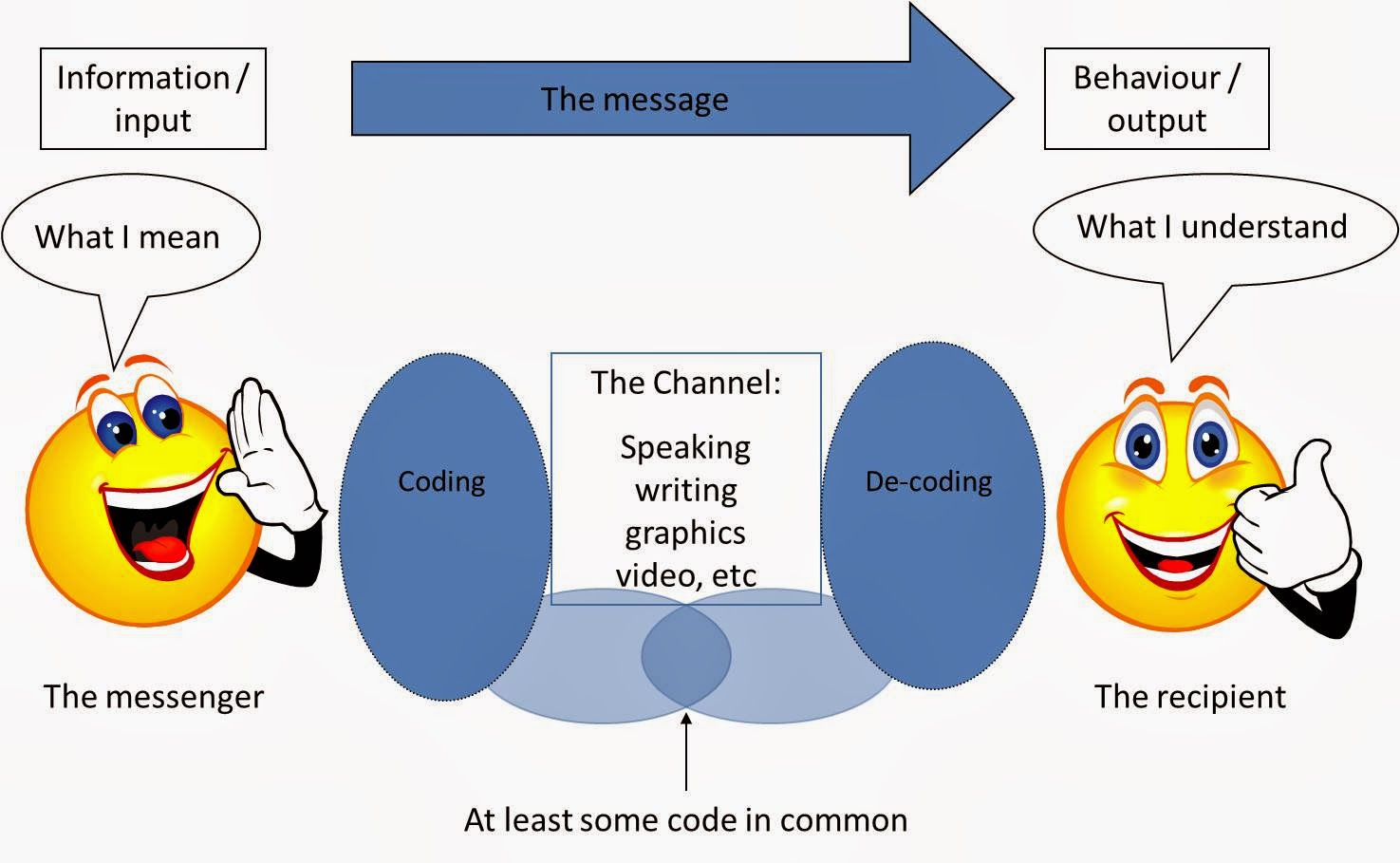Communication Process: Concept and Elements
The communication process involves several key components that work together to ensure messages are sent, received, and understood effectively. For teachers, understanding each part helps make classroom communication clearer and more impactful.
Main Elements of the Communication Process
1. Sender (Source)
- Role:
The sender is the originator of the message—the one who initiates
communication.
- Responsibility:
To conceive, encode, and deliver a clear and purposeful message.
- Teacher
Example: The teacher prepares a lesson on fractions and decides how to
explain it to the class.
2. Encoding
- Role:
Encoding is the process of converting thoughts or information into
symbols, words, gestures, or images.
- Responsibility:
To choose language, tone, and medium appropriate for the audience.
- Teacher
Example: The teacher decides to use simple language, visual aids, and
real-life examples to explain fractions, making the message easy for all
students to grasp.
3. Message
- Role:
The message is the content or information the sender wants to communicate.
- Responsibility:
To ensure the message is accurate, relevant, and tailored to the
receiver’s level.
- Teacher
Example: The actual explanation of “a fraction is a part of a whole,
like half a pizza.”
4. Channel (Medium)
- Role:
The channel is the means or method through which the message travels from
sender to receiver.
- Responsibility:
To select the most effective channel based on the context and the
audience.
- Teacher
Example: The teacher uses spoken words, a whiteboard drawing, and a
hands-on activity with paper cut-outs as channels.
5. Receiver
- Role:
The receiver is the individual or group who gets the message.
- Responsibility:
To attend to, interpret, and try to understand the message.
- Teacher
Example: The students listen, observe, and participate in the activity
on fractions.
6. Decoding
- Role:
Decoding is the process by which the receiver interprets and makes sense
of the message.
- Responsibility:
To accurately understand the sender’s intended meaning, based on prior
knowledge and context.
- Teacher
Example: A student relates the “half a pizza” example to his/her own
experience of sharing food.
7. Feedback
- Role:
Feedback is the receiver’s response to the message, sent back to the
sender.
- Responsibility:
To let the sender know whether the message was understood, and to seek
clarification if needed.
- Teacher
Example: Students answer the teacher’s follow-up questions, nod, or
ask doubts if something isn’t clear.
8. Noise (Barriers)
- Role:
Noise refers to anything that disrupts or interferes with the
communication process.
- Responsibility:
Both sender and receiver should try to minimize noise for effective
communication.
- Teacher
Example: Physical noise (like construction outside), psychological
noise (student’s worries), or semantic noise (complex vocabulary) can all
be barriers.
Visual Representation (Table Format)
|
Element |
Teacher’s
Role |
Example in
Classroom |
|
Sender |
Initiates
communication |
Teacher
prepares lesson on fractions |
|
Encoding |
Converts
ideas to words/symbols |
Uses simple
language and drawings |
|
Message |
Actual
content |
Explains
"fraction is part of a whole" |
|
Channel |
Chooses
method |
Speaks,
writes on board, shows objects |
|
Receiver |
Gets message |
Students
listen and observe |
|
Decoding |
Interprets
message |
Students link
fractions to daily life |
|
Feedback |
Responds to
sender |
Students
answer questions or ask doubts |
|
Noise |
Reduces
barriers |
Ensures quiet
environment; uses clear language |
Example Scenario: Teaching ‘Photosynthesis’
- Sender:
Teacher wants to teach photosynthesis.
- Encoding:
Selects simple words, draws a diagram, and uses a plant in the classroom.
- Message:
“Photosynthesis is how plants make food using sunlight, water, and air.”
- Channel:
Uses spoken words, blackboard diagrams, and real plant demonstration.
- Receiver:
Students in the class.
- Decoding:
Students listen, watch, and try to understand the process.
- Feedback:
Students ask, “Why do plants need sunlight?” or attempt to draw the
process.
- Noise:
The teacher avoids complex words and ensures the class is quiet and
attentive.
Summary and Tips for Teachers
- Be
clear in encoding messages. Use age-appropriate language and examples.
- Choose
the best channel—mix verbal, visual, and interactive methods.
- Encourage
feedback—ask questions, invite students to paraphrase, check for
understanding.
- Minimize
noise—ensure good classroom environment and remove misunderstandings
quickly.
- Reflect
and adapt—use feedback to improve your communication every lesson.
Remember:
The effectiveness of teaching depends not just on what is taught, but on how
well it is communicated. Understanding and using every step in the
communication process helps teachers ensure students truly understand and
learn.


Comments
Post a Comment